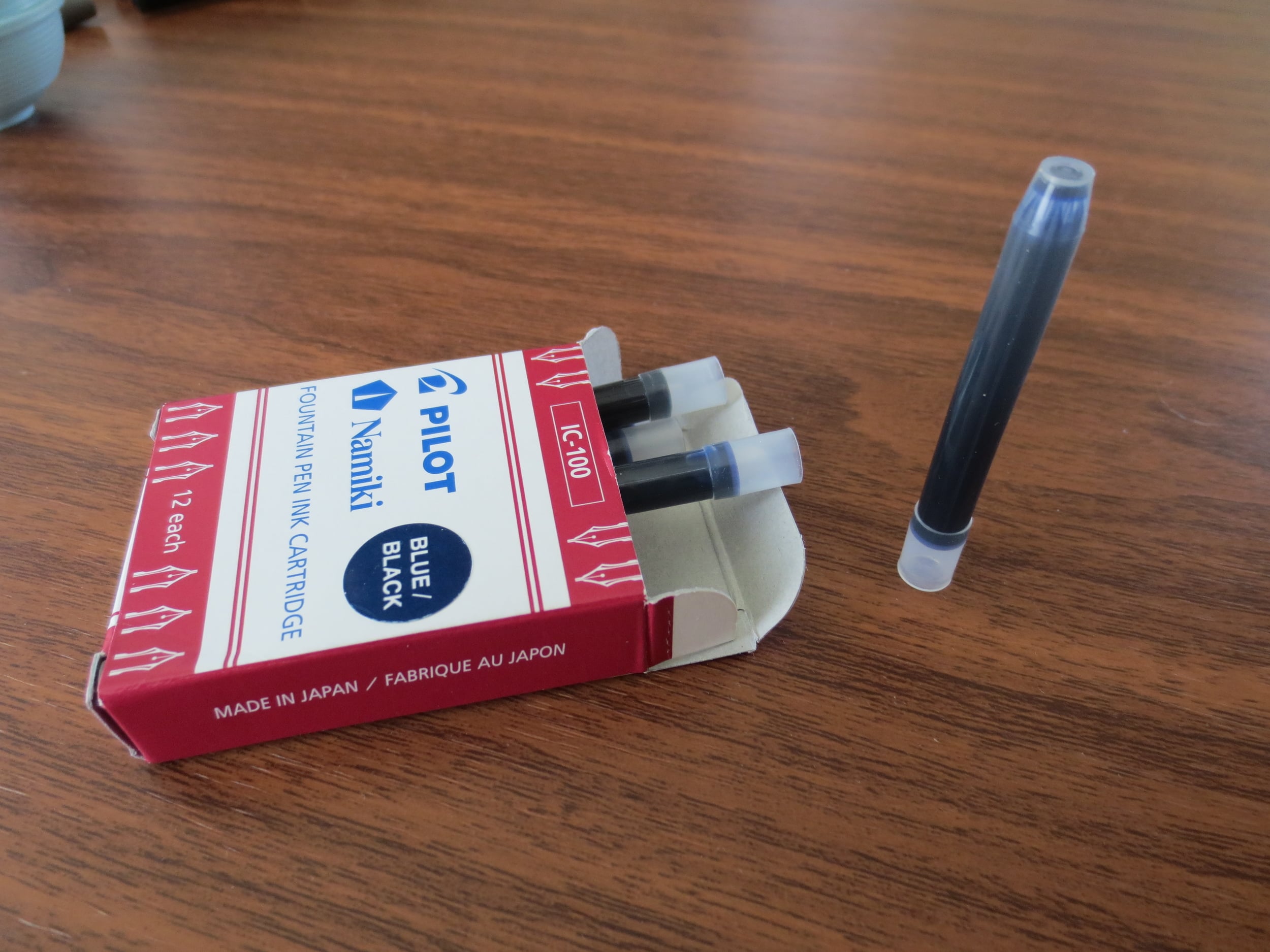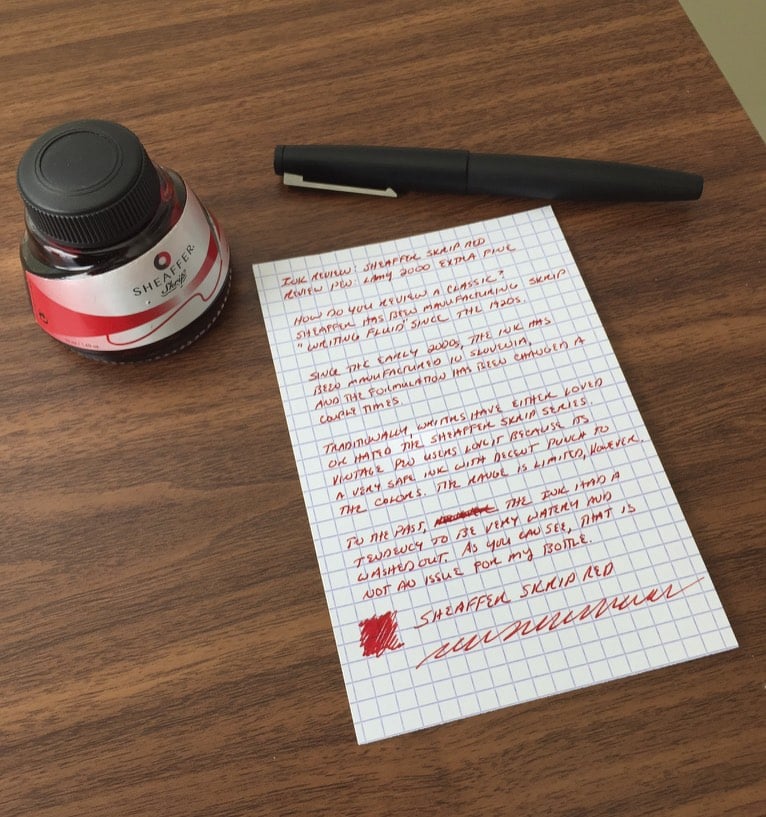UPDATE: A new version of this “Top Five” list was published on February 26, 2020. Check out the post “Daily Writers: The Best Fountain Pen Inks for Daily Use.”
Over the past few years, we’ve witnessed an explosion in the number of fountain pen inks on the market. Six years ago, when I first picked up my pen again after a long hiatus, the main players with any sort of color variation in their ink lines were Noodler’s and Private Reserve. For us corporate drones, bottles of staid (and somewhat boring) inks such as Parker, Waterman, and Pelikan 4001 could still be found on the shelves of big-box office supply stores. Today, the big box stores have more or less abandoned fountain pens entirely (except for disposables and super-cheaps), but the overall landscape has completely changed: I now count 10 readily available brands of fountain pen ink in my desk drawer alone. Great, right? But a major drawback is the paralysis of choice and the potential for overwhelm.
I like to shuffle colors in and out of my pens, but there are five or so inks that I keep coming back to for everyday writing. By “everyday,” I mean writing at work on cheap copy paper, in my pocket notebooks, and taking notes while I read. With the exception of one recommendation, most of these inks are readily available and relatively inexpensive.
Sailor Kiwa-Guro Nano-Black. Expensive, yes; however, the price has come down a bit lately, and this Japanese workhorse will get the job done anywhere, even in a Moleskine. It’s pigmented ink, so just remember to clean your pens out regularly. Some might balk at paying this much for black ink, but given how long a bottle of ink lasts me, it’s not really a consideration. The versatility of this ink makes it a useful travel companion.
Waterman Serenity Blue/Florida Blue. I’ve sung the virtues of this ink before, as it made my list of “Best Blue Inks for the Office.” Want something that’s nice to look at, writes well on any kind of paper, won’t turn any heads, and is inexpensive? Try this.
Pilot Blue-Black. Another great ink that’s typically only available in cartridge form in the U.S., though you can easily order it from Japan off eBay or Amazon (in the big 350ml bottles, too). Like Waterman blue, Pilot Blue-Black dries quickly and works well on most papers, but you also get some nice shading and red sheen when the ink dries.
Diamine Oxblood. Ever wish you had a red ink that was dark enough to use for everyday business correspondence? Pick up a bottle of Oxblood. Like the vast majority of Diamine inks, it plays nice with most pens and different grades of paper. When it comes to my personal favorite readily available red ink, it’s a toss-up between Oxblood and . . .
Sheaffer Skrip Red. With its classic fire-engine hue, it’s my favorite “true red” ink. Skip Red is probably one of the few bright red inks that doesn’t stain, and can be considered “safe” to use in most vintage pens (though I’d still advise you to be careful with lighter colored celluloids or demonstrators).
This list reflects my own opinion. There are an infinite number of “top five” lists floating around out there, but people love recommendations, so here are mine. What I need from an ink on a day-to-day basis is probably different than what someone else wants, but if this list can be helpful to even a few people out there, it adds value. This list also shouldn't be confused with my "favorite inks of all time," because that list will include things such as limited editions and vintage inks (and is on the way).



